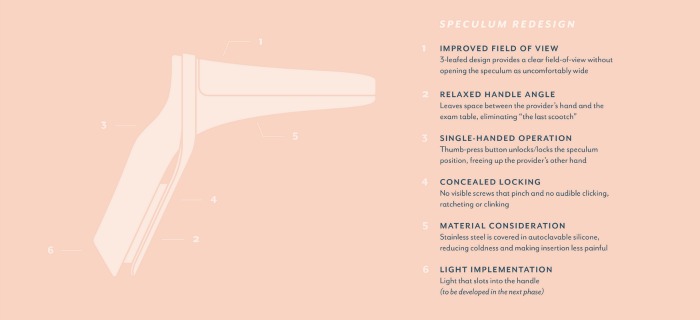
For anyone who’s suffered through a pelvic exam, the word “speculum” is enough to cause immediate tension. In fact, I look forward to the moment I finish writing this story so I can unclench.
Such an adverse reaction could soon be a thing of the past, thanks to Frog, a “global digital transformation and strategy firm” that was at least partially responsible for the look of iconic products such as the original Macintosh computers.
While the project (called Yona) is still in the early stages, Frog is reimagining “the pelvic exam from a patient-centred perspective, beginning with the design of the speculum”. Their goal? To transform health care, one vagina at a time.
By the time Yona is finished, the redesigned speculum will hopefully be able to provide “a clear field-of-view without opening the speculum as uncomfortably wide”, eliminate all those terrifying ratcheting and clinking sounds that make us tense up even more, and reduce the coldness, making insertion less painful in general.

There will even be a digital experience that allows you to fill out forms and ask questions without worrying about whether your doctor is judging you for the way you’re phrasing things, or for being uninformed about some common experiences.
“The redesigned speculum is body-friendly and approachable in form and material choice, making it less cold and uncomfortable. Visually, it’s less intimidating and auditorily, it’s silent, eliminating the jarring clicks and ratchets. Functionally, it’s a seamless replacement for the current speculum, but can be operated with one hand,” according to the Yona Care website.
Patients will receive their results straight to their phone in “unambiguous human terms” that everyone will be able to understand, while suggesting follow-ups if necessary, or times for their next regular appointment.
Considering the speculum has been through very few redesigns since it was first created by a male in the the 1840s, it’s about time we got a device and an experience that doesn’t tempt us to ignore symptoms and avoid appointments altogether.